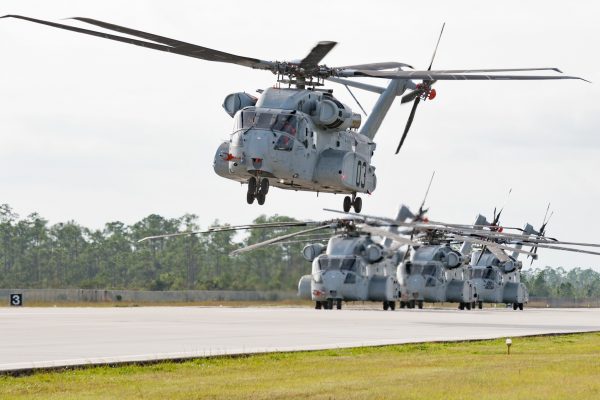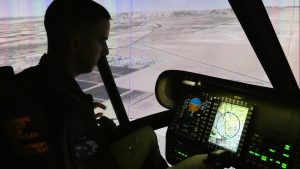The H-53 Heavy Lift Helicopters program office (PMA-261) took delivery of the first training device for the CH-53K King Stallion helicopter on April 14, 2020. The Containerized Flight Training Device (CFTD) is housed at Marine Corps Air Station (MCAS) New River, Jacksonville, NC.
The CFTD, built by Lockheed Martin in partnership with Veraxx, provides realistic cockpit or system displays (i.e. visual resolution, tactile, spatial, audio, and functionality) and can simulate weather and tactical environments. It is also capable of connectivity with other simulators for Enhanced Attitude Control and other aircraft training scenarios.
“The CFTD is an amazingly capable training device,” said Colonel Jack Perrin, PMA-261 program manager. “It is a much less expensive practice than using operational equipment and provides near-aircraft fidelity into a state-of-the-art training simulator for the fleet.”
The CFTD is the first in a series of new training devices being developed for the CH-53K. All training devices will eventually be located at the Center for Naval Aviation Technology Training (CNATT) at MCAS New River, where all of the aircraft’s aircrew and maintenance maintainers will be trained. Delivery of two other CH-53K training devices – the Helicopter Emulation Maintenance Trainer and the Composite Maintenance Trainer are also expected this year.
The CH-53K is completing development tests, leading to Initial Operational Test and Evaluation in 2021. First fleet deployment of the aircraft will be in 2023/24. The simulation software continuously updates, so as the program team makes necessary modifications to the CH-53K into the future, the CFTD will also change.
Tom Gordon, vice president of Training and Simulation Solutions at Lockheed Martin: “This state-of-the-art simulator prepares Marine Corps aviators to fly this digital, fly-by-wire aircraft in a cost-effective highly immersive virtual environment,” said Tom Gordon, vice president of Lockheed Martin training and simulation solutions. “Training in these devices will prepare Marines, both aircrew and pilots, for operational deployment.”




















